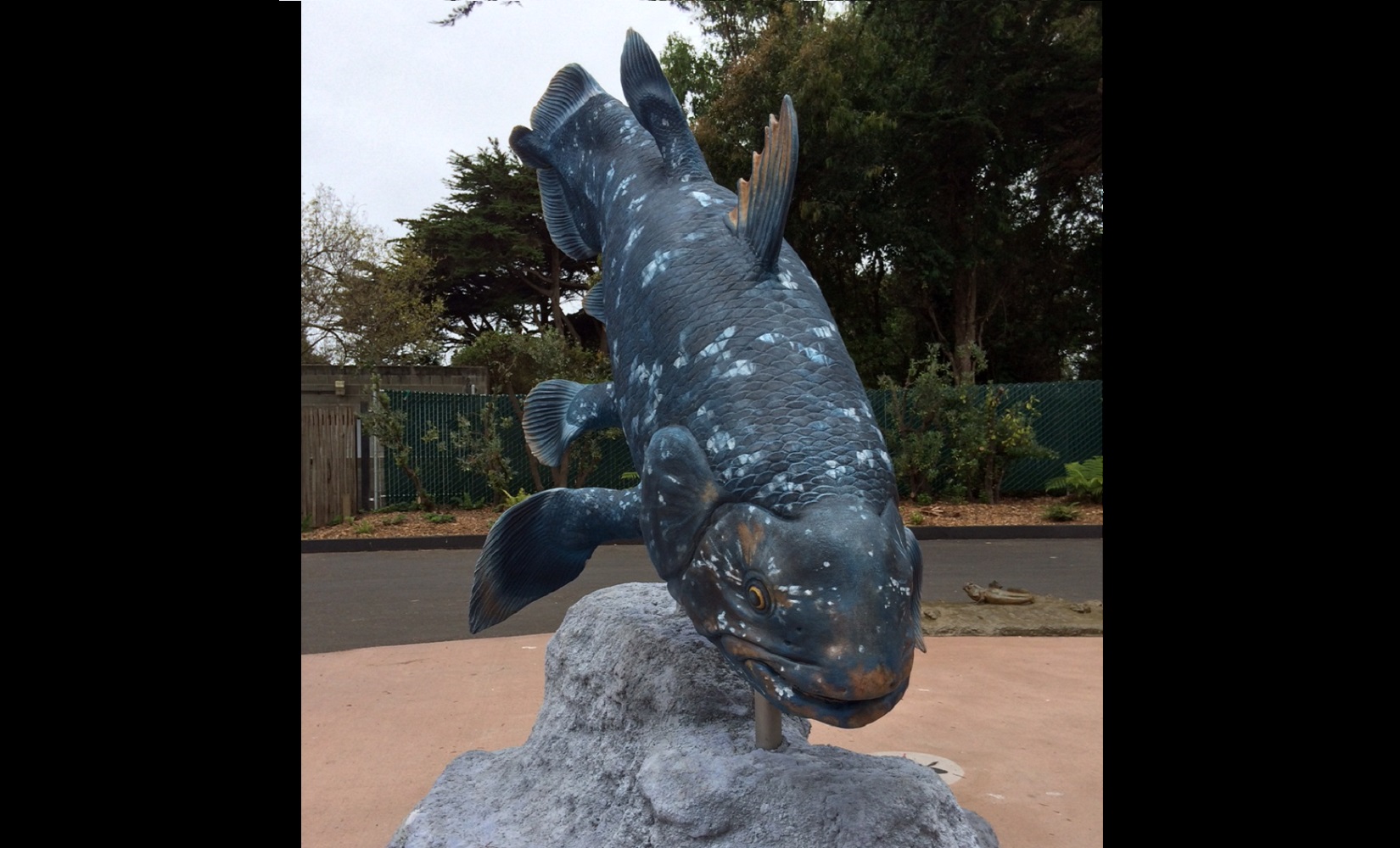Coelacanth
Genus Latimeria

Fascinating Facts
- South African natives call this fish “gombessa” or “mame.”
- Their name comes from Latin for “hollow spine,” due to their lack of a spinal column; they instead have a fluid-filled notochord.
- Bycatch via shark nets and hook and line fishing is a major threat.
- Coelacanths have an organ in their snouts that is electrosensory.
- Most thought this fish was extinct, until one was caught in 1938.
- They have paired lobe fins that move like legs, misleading scientists into thinking they were a missing link between fish and life on land.
- They can grow as large as 7 ft and 200 lbs!
Habitat/Diet
Coelacanths are nocturnal hunters, sheltering in caves along rocky coastlines throughout the day and foraging at night on squid and other fish.
Status in the Wild
African Coelacanth: Critically Endangered – IUCN 2000; Sulawesi Coelacanth: Vulnerable – IUCN 2008
Range
Along the eastern coast of Africa from the Comoros Islands, past the western coast of Madagascar to the South African coastline, and the Celebes Sea, north of Sulawesi in Indonesia.
Location in the Zoo
Fish and Amphibians Zone of the Sculpture Learning Plaza
